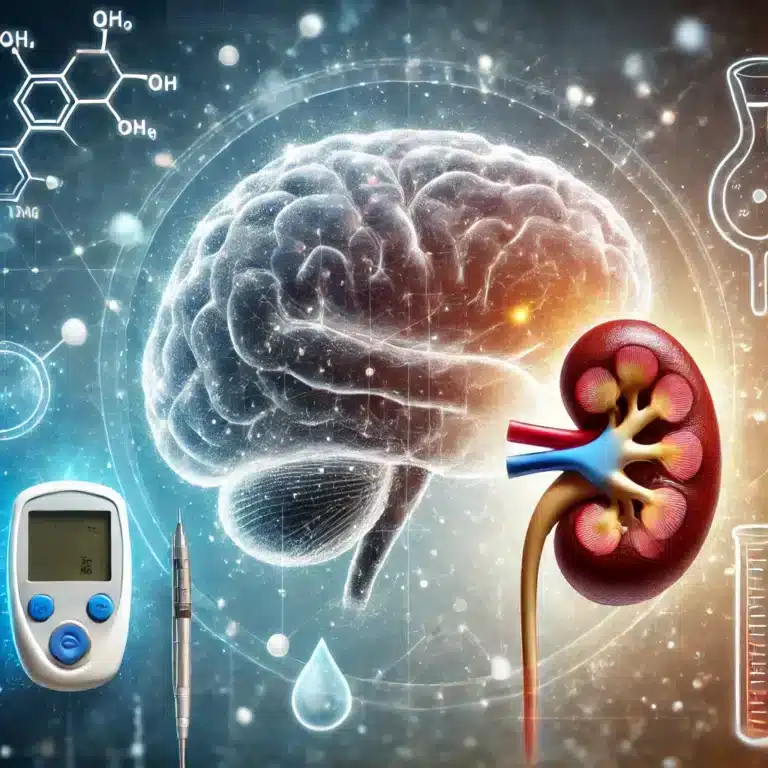Summary
- Two datasets were analyzed to identify common genes between Diabetic Kidney Disease (DKD) and temporal cortex (TC).
- A total of 133 overlapping differentially expressed genes (DEGs) were identified in DKD and TC datasets.
- Eight common biomarkers were identified using machine learning algorithms as potential diagnostic biomarkers.
- Gene set enrichment analysis revealed pathways involved in the occurrence of cognitive dysfunction in DKD.
- Animal models confirmed the upregulation of these biomarkers in brain and kidney tissues of mice with DKD.
A recent study published in a scientific journal has revealed groundbreaking findings on the connection between diabetic kidney disease (DKD) and cognitive dysfunction. Researchers conducted an extensive analysis of gene expression data from patients with DKD and temporal cortex (TC) to identify common differentially expressed genes (DEGs) between the two conditions.
Using data from the Gene Expression Omnibus (GEO) database, the study identified a total of 133 overlapping DEGs, including 62 commonly up-regulated genes and 71 commonly down-regulated genes. These genes play a crucial role in various biological processes and pathways associated with DKD and cognitive dysfunction.
Further analysis of the DEGs revealed enrichment in pathways related to diseases such as Parkinson’s disease and non-alcoholic fatty liver disease. The up-regulated genes were found to be involved in processes like cellular respiration and mitochondrial function, while the down-regulated genes were linked to neuronal migration and synaptic growth regulation.
The study also employed machine learning algorithms to identify potential diagnostic biomarkers for DKD and cognitive dysfunction. Through analysis, eight genes were identified as common biomarkers, showing significant predictive ability in discriminating between the two conditions. These biomarkers were further validated in an animal model of DKD and cognitive dysfunction, confirming their overexpression in the brain and kidney of diseased mice.
In addition, the study investigated the role of SH3RF1, a gene related to the apoptosis pathway, in DKD and cognitive dysfunction. Immunofluorescence and TUNEL staining revealed increased expression of SH3RF1 and higher levels of apoptosis in the cerebral cortex and hippocampus of mice with DKD, indicating its potential role in the development of the conditions.
Overall, this research provides valuable insights into the genetic markers associated with DKD and cognitive dysfunction, shedding light on potential therapeutic targets and diagnostic tools for these complex conditions.
Diabetes & Endocrinology, Nephrology, Neurology, Machine Learning Algorithms, Biomarkers


